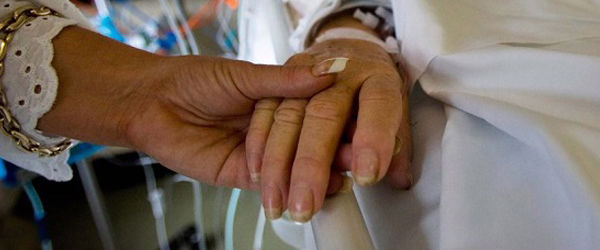Cradle Catholic Carson Weber had a lot of questions about his faith when he was in college at Texas A&M University. Impressed with a group of students who attended daily Mass, he turned to online Catholic websites to increase his knowledge about Catholicism.These cyber-searches contributed to a reawakening of his faith, said Weber, 34, who spoke Aug. 8 on “The New Media and the New Evangelization” at the C3 Technology Conference held from Aug. 5-8 at Loyola Marymount University.“I stumbled across Catholic.com, and I started reading everything I could get on there — the new media,” said the married father of three young children who holds a master of arts in theology & Christian ministry from the Franciscan University in Steubenville, Ohio. The former associate director for new media evangelization in the Diocese of Sacramento, Weber currently works as a home-based website designer and new media entrepreneur.He began using Internet-powered new media when he started recording Bible study sessions he led as director of evangelization, adult faith formation and RCIA at St. Mary Catholic Church in Brenham, Texas. He went from making CDs one-by-one in his computer to producing MP3 files of his 40-hour “Understanding the Scriptures” series, which people could download as free podcasts from iTunes.“To my surprise, there were people downloading all 30 episodes from every state and from countries all over the world,” said Weber. “This allowed for instant access to the faith, right there on [people’s] mobile devices using the new media” with a million downloads now. Many listeners have emailed Weber to say how much they learned from the series, including a few who were inspired to become Catholic.Noting that the average American spends three-and-a-half hours a day driving, Weber pointed out that evangelization today can take place in the car as drivers listen to podcasts. Internet-accessed videos watched on computers or mobile devices are other ways to evangelize tech-savvy seekers.Weber advised attendees wanting to expand their use of the new media for new evangelization purposes to “be like John the Baptist,” who pointed people toward Jesus. Weber noted that this can be done today when people point spiritual seekers to great resources, such as Father Robert Baron’s Catholicism video series; Catholic websites packed with information, like StrangeNotions.com and PhatMass.com, which has an online forum for youth to get answers; and podcasts, including the many available from Lighthouse Catholic Media.“Studies by Nielsen [market research] have shown that people who are religious spend just as much time with the new media as those who are not — we are just as hooked into new media and culture,” said Weber.He suggested that catechists might invite families with children attending religious education to watch a Catholic YouTube video. “Have them discuss what they watch together,” said Weber. Another suggestion was to “have a page of resources on your website that you can point people to” to answer their questions about Catholicism, providing a “non-confrontational” way to impart information.“It’s just them in front of a computer reading the website,” noted Weber. “It’s very easy to consume content that way.”For those wanting to learn web skills to produce original content for evangelization, Weber suggested the website, Lynda.com, which offers videos for a nominal monthly fee on topics such as how to make podcasts or achieve Internet search engine optimization.“With the Internet, there are just untold ways that you can use it in order to evangelize and reach out,” declared Weber. “Don’t be afraid to get into the new media and try it out.”“What I got [from Weber’s talk] is that we have to be creative ourselves,” said Teresa Minera, confirmation coordinator/catechist at St. Basil in Los Angeles. “The new evangelization calls everyone to find the tools, and this conference has been a great asset for those who might not have an opportunity to go and learn how to use what is available. We got a lot of resources and ideas that are accessible to everyone, especially for those working with youth, so it was a great opportunity for all of us.”At his C3 conference keynote talk Aug. 6, Our Lady of the Angels Region Auxiliary Bishop Edward Clark encouraged attendees to use technology and social media to evangelize, promote and defend the faith. Social media and technology, he added, provide valuable tools to communicate the faith and to reach out to policy makers on critical moral issues. He noted the California bishops’ online Catholic Legislative Network’s effective use of technology to communicate with California state legislators and encouraged use of social media to communicate with government representatives on important issues such as immigration, the HHS mandate and proposed bill SB 131 (repealing the statute of limitations for claims of childhood sexual abuse against private employers, exempting public institutions). Although religion does not define political action, noted Bishop Clark, for people of faith, religious belief does define moral and ethical decision making and Catholics have a right to express their faith-formed conscience.Ileana Herrera, parishioner at St. Andrew (Pasadena), said that the information she received at the conference was helping her get “mentally changed” into the new technologies. “Our children are so much into it,” she said. “We need to start growing positive and doing our best in getting involved in this new world where we are. We have to step in and find ways, because this is our technology and kids need to get positive things from the technology, not only the negative things.”{gallery width=100 height=100}gallery/2013/0823/c3/{/gallery}

